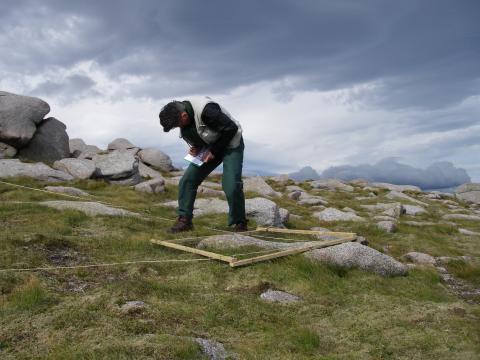A recent paper published in Ecology letters (Staude et al., 2021) looks at plant species turnover for three biomes from across Europe. Data was collected from three fixed-point repeat vegetation survey databases focused on natural and semi-natural habitats, including for mountain summits (GLORIA), forest understories (forestREplot) and lowland grasslands (GRACE).
The ECN Cairngorm field site has been involved in GLORIA (the GLobal Observation Research Initiative in Alpine environments) since 2001, undertaking precision vegetation surveys on four mountain summits every seven years.
This paper highlights a commonality in species turnover across the three biomes, with smaller ranged species (often specialists) being replaced by larger ranged, more nutrient demanding species (often generalists). The reasons for this will vary at local and habitat scales, but is likely in response to human-driven global change making nutrients more widely available. For mountain summits this is likely due to increased nutrient cycling as a result of warming temperatures; whilst for forests and grassland the aerial deposition of nutrients has led to soil eutrophication.
These results are important because they could help us better understand why, in natural and semi-natural habitats, we often see no net loss in local species diversity with global species loss, and, why spatially disparate communities appear to be becoming more similar in species composition (known as biotic homogenisation).
Further information
Full reference: , , , , , , et al. (2021) Directional turnover towards larger-ranged plants over time and across habitats. Ecology Letters, 00, 1– 17. Available from: https://doi.org/10.1111/ele.13937
